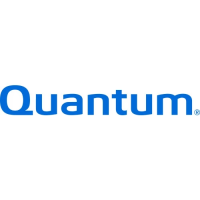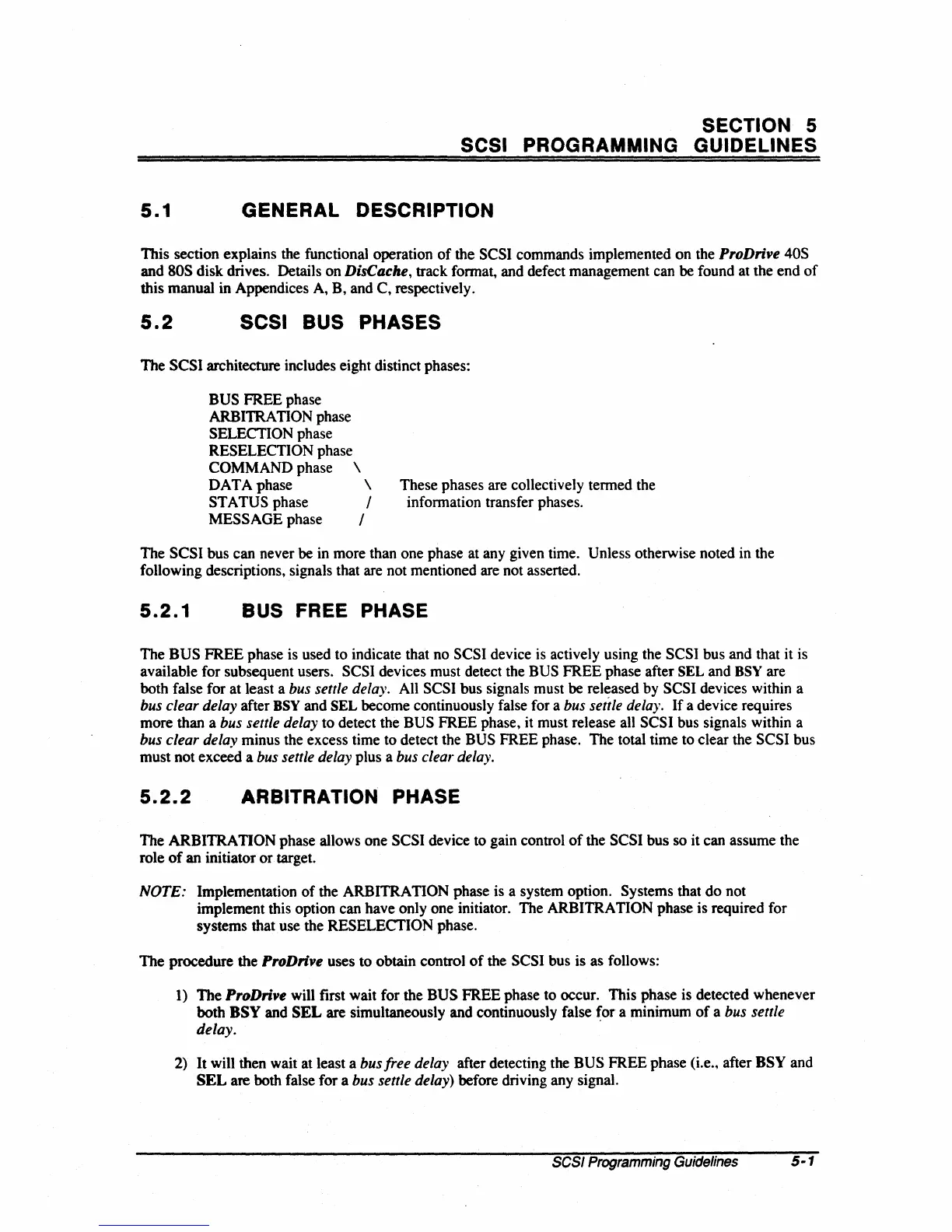SECTION 5
SCSI PROGRAMMING GUIDELINES
5.1 GENERAL DESCRIPTION
This section explains the functional operation
of
the SCSI commands implemented on the ProDrive 40S
and 80S disk drives. Details on DisCache, track fonnat, and defect management can
be
found at the end
of
this manual in Appendices
A,
B, and C, respectively.
5.2
SCSI BUS PHASES
The SCSI architecture includes eight distinct phases:
BUS FREE phase
ARBITRATION phase
SELECTION phase
RESELECTION phase
COMMAND phase \
DATA phase \
STATUS phase /
MESSAGE phase /
These phases are collectively termed the
information transfer phases.
The
SCSI bus can never
be
in more than one phase at any given time. Unless otherwise noted in the
following descriptions, signals that are not mentioned are not asserted.
5.2.1
BUS FREE PHASE
The
BUS
FREE phase is used to indicate that no SCSI device
is
actively using the SCSI bus and that it is
available for subsequent users.
SCSI devices must detect the BUS FREE phase after SEL and
BSY
are
both false for at least a bus
settle delay. All SCSI bus signals must
be
released by SCSI devices within a
bus clear delay after
BSY
and SEL become continuously false for a bus settle delay.
If
a device requires
more than a bus settle delay to detect the
BUS FREE phase, it must release all SCSI bus signals within a
bus clear delay minus the excess time to detect the
BUS FREE phase. The total time to clear the SCSI bus
must not exceed a bus settle delay plus a bus clear delay.
5.2.2
ARBITRATION PHASE
The ARBITRA
nON
phase allows one SCSI device to gain control
of
the SCSI bus so it can assume the
role
of
an initiator
or
target.
NOTE: Implementation
of
the ARBITRATION phase is a system option. Systems that do not
implement this option can have only one initiator. The ARBITRATION phase is required for
systems that use the
RES ELECTION phase.
The procedure the
ProDrive uses to obtain control
of
the SCSI bus is as follows:
1)
The
ProDrive will first wait for the BUS FREE phase to occur. This phase is detected whenever
both
BSY and SEL are simultaneously and continuously false for a minimum
of
a bus settle
.~.
.
2)
It
will then wait at least a bus free delay after detecting the BUS FREE phase (i.e
.•
after BSY and
SEL are both false for a bus settle delay) before driving any signal.
SCSI
Programming
Guidelines
5·1

